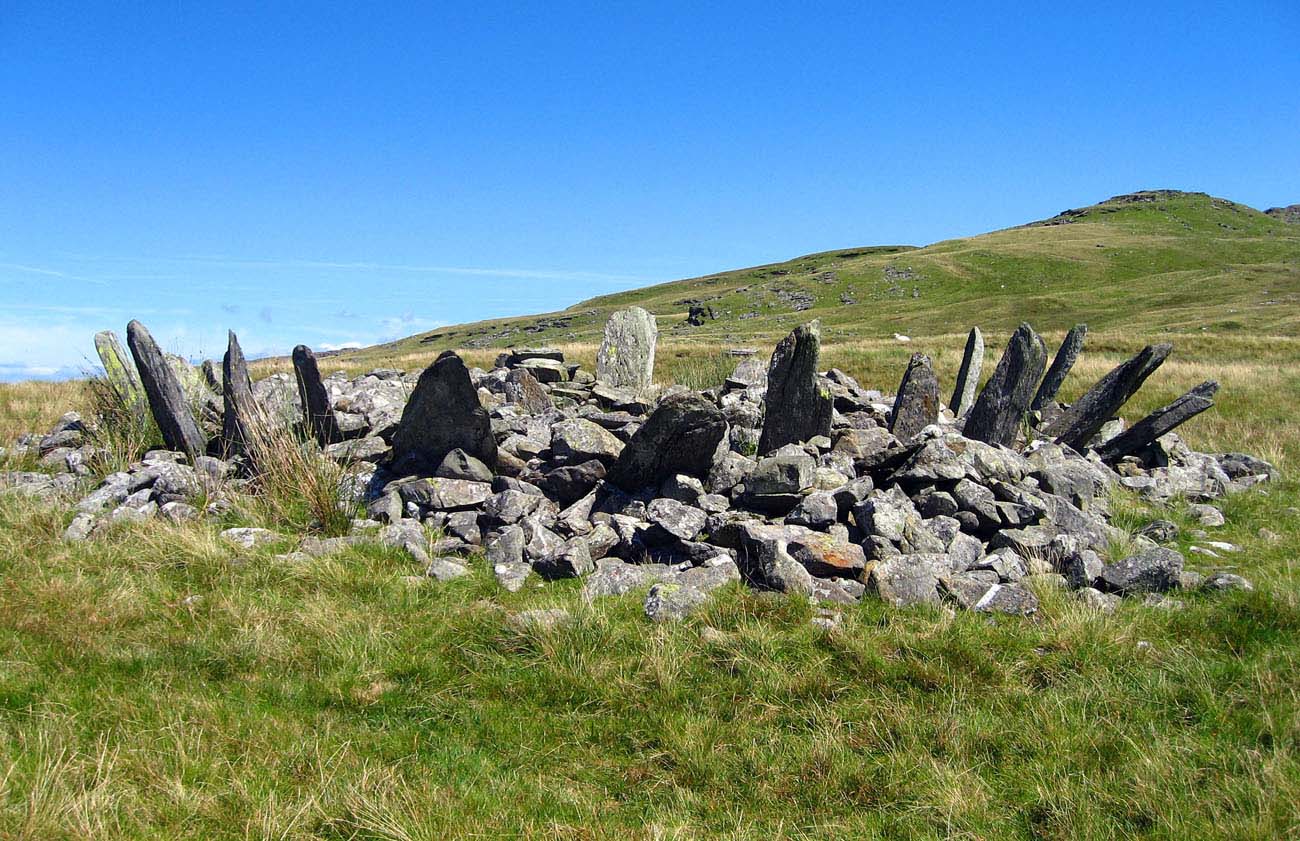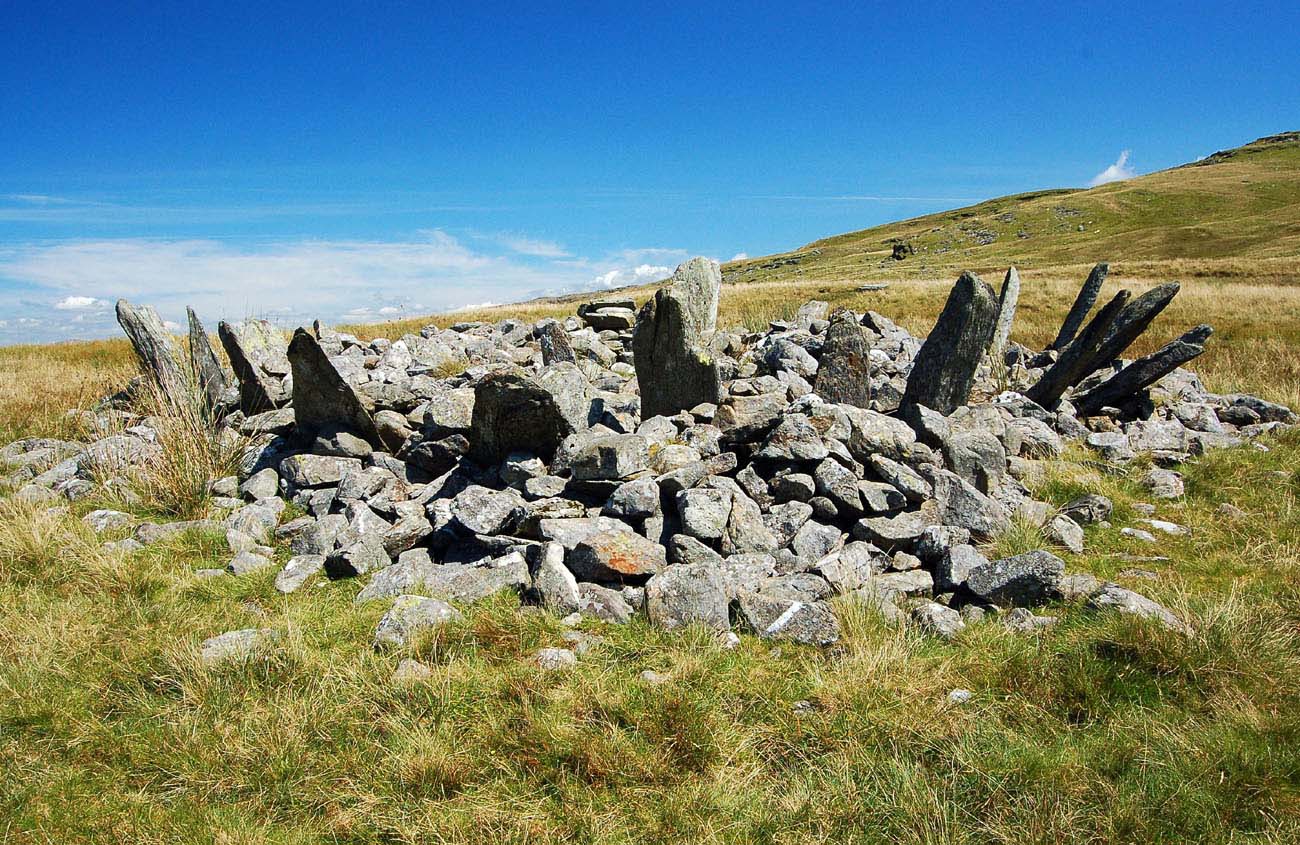History
The stone circle of Bryn Cader Faner (the Celtic name means “hill of the flag-chair” or “hill of the flag-throne”) was created in the Bronze Age, probably towards the end of the third millennium BC. The place was damaged by treasure hunters in the 19th century, who left a hole in the center, indicating the location of the cemetery or grave. Unfortunately, additional damage was done before World War II, when the British army removed some stones on the eastern side, and the others used as shooting targets.
Architecture
The cromlech was made of about 30 stones, about 2 meters long, set more or less vertically, arranged around the circumference of a circle with a diameter of 8.7 meters. They were placed on a small burial mound (cairn) made of small stones, inside which a burial (cist) was placed. All the stones of the circle were strongly tilted outwards, into a characteristic shape similar in appearance to teeth.
Current state
Bryn Cader Faner is considered one of the most impressive cromlechs in Wales. The stone circle is remarkably well preserved, even after being damaged in modern times. Eighteen of the original thirty or so large, upright stones remain. Entry is free, but to see it you have to walk about four miles through partly marshy ground.
bibliography:
Burl A., The stone circles of Britain, Ireland, and Brittany, New Haven-London 2000.
Castleden R., Neolithic Britain: New Stone Age sites of England, Scotland and Wales, London 1992.
The Royal Commission on The Ancient and Historical Monuments and Constructions in Wales and Monmouthshire. An Inventory of the Ancient Monuments in Wales and Monmouthshire. County of Merioneth, London 1921.


